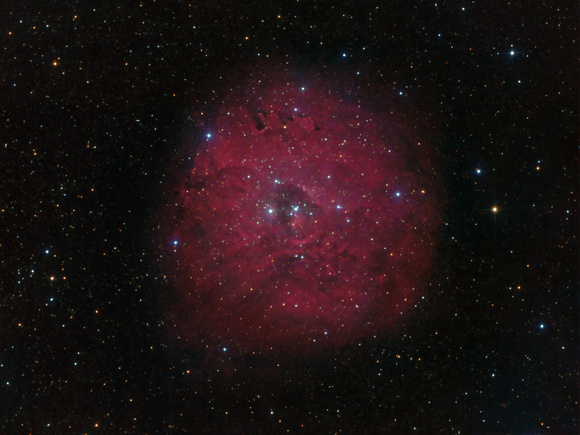SH2-170 - The Little Rosette Nebula
Date Posted: 4/11/2025
Date Taken: Seven nights, from 9/5 thru 10/6/2024
Scope: Planewave CDK 12.5 f/8, 2541mm
Camera: SBIG STL-11000 with Astrodon Tru-Balance E-Series Gen2 filters
Temp: -15C
Mount: Losmandy Titan
Guiding: On-axis via ONAG-XM and SX UltraStar at 2541mm. FocusLock real-time focus for focusing.
Exposure: LHaRGB, 540:615:130:125:135, total 25.75 hours. Luminance and Ha 15min unbinned; RGB 5min binned 2x2.
Calibrated and Stacked with CCDStack2; RGB combine and DDP with MaximDL. Processed with CS4.
Sh2-170 is a faint emission nebula located about 7500 light years away in Cassiopeia. It is colloquially known as the Little Rosette Nebula, due to it's similar appearance to it's more famous namesake.
The bright star at the center of the nebula is ionizing the surrounding hydrogen gas, causing it to emit red light. Known as Hydrogen Alpha or Ha light, it a longer wavelength of red light beyond the human eye's ability to detect; the nebula is extremely faint in visible light. This image adds over 10 hours of exposure in Ha to bring out the nebula. The nebula also contains oxygen and sulfer gas, making it a good candidate for narrowband imaging.


